Mindarie Foreshore & Kinsale Park Trail - Stop 1
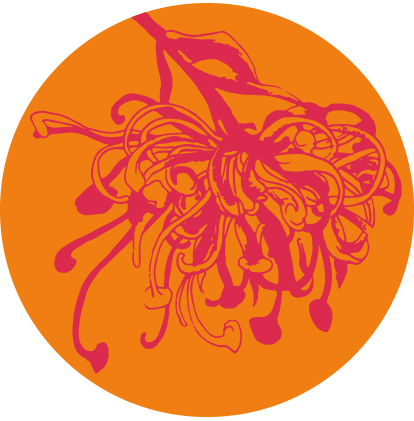
Summary
- The vegetation along the Quinns-Mindarie foreshore and in Kinsale Park is representative of a range of coastal plant communities that previously occurred in the area, including five distinctive communities and a rare flora species;
- The remaining bushland and limestone cliffs support a rich diversity of birds, reptiles and the Southern Brown Bandicoot (subspecies only found in the south west of Western Australia); and
- Local community members have greatly contributed to improving the vegetation condition and maintaining the conservation values of foreshore bushland areas.
For detailed information, please read on:
Vegetation
Bare limestone or shallow sand over limestone provides the base for the various plant communities found in this area. Vegetation surveys recorded 18 vegetation communities along the Quinns Rocks (south of the dog beach) and Mindarie foreshores.
The vegetation ranges from shrubland to heath with a mix of dominant species: Olearia axillaris, Spyridium globulosum, Scaevola crassifolia, Acacia cyclops, Rhagodia baccata, Myoporum insulare and Melaleuca huegelii.
There are some distinctive plant communities found along this foreshore which can be examined along the Quinns-Mindarie Foreshore Trail. These include:There are some distinctive plant communities found along this foreshore which can be examined along the Quinns-Mindarie Foreshore Trail. These include:
- Frankenia pauciflora low shrubland on limestone cliffs (near the Trail stop No. 2 at the lookout)
- Lepidosperma gladiatum sedgeland (found in pockets along the coastal path to Mindarie)
- Melaleuca cardioplylla/Melaleuca huegelii/Acacia rostellifera closed heath (Kinsale Park)
- Mixed open heath to low open heath with Acacia xanthina/Banksia sessilis tall open shrub (Kinsale Park)
- Eucalyptus decipiens malee over mixed low heath (Kinsale Park).
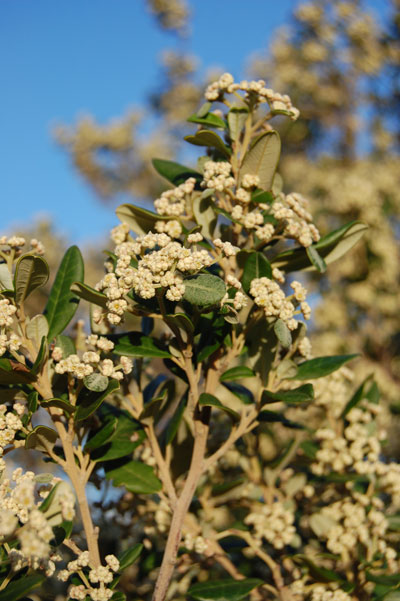
Image: Basket Bush (Spyridium globulosum) is a widespread and common species on secondary and sheltered primary dunes or limestone areas along the coast. It flowers between June and November and its small flowers are pollinated by a variety of smaller insects. Photo courtesy to the Quinns Rocks Environmental Group Inc.
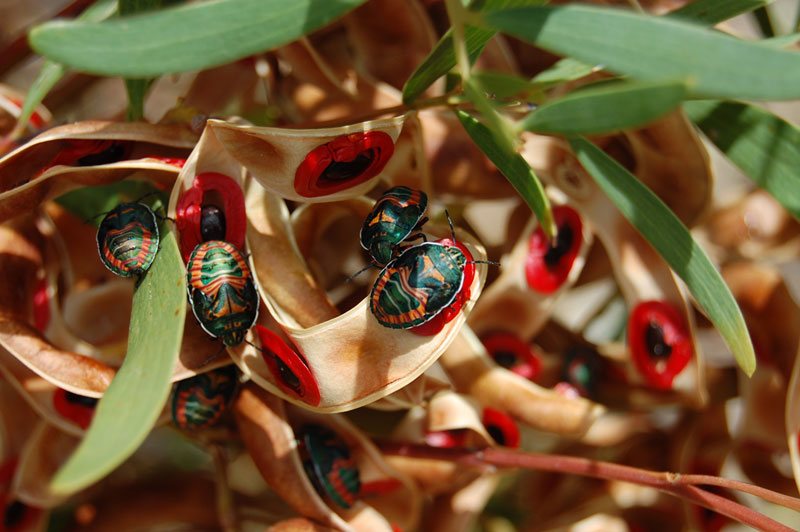
Image: Red-eyed wattle (Acacia cyclops) is one of the most important large shrubs that grow in swales behind the primary dunes. It is rich in associated insects. This species of jewel bug is very well camouflaged with its surroundings while feeding on the seeds of the red-eyed wattle (Powell 2009). Photo courtesy to the Quinns Rocks Environmental Group Inc.
Animals
The foreshore bushland provides a home to many native animals, including reptiles, birds and at least one marsupial. Coastal ecosystems of Perth have the richest assemblage of reptiles, supporting greater number of species than any of the inland bushland or Jarrah forest. The bare sandy areas naturally occurring within coastal vegetation are the prime habitat for these reptiles.
Most represented reptiles are the legless lizards, skinks and elapid snakes. Due to the presence of limestone, the dunal zone is twice as rich as other areas in geckos.
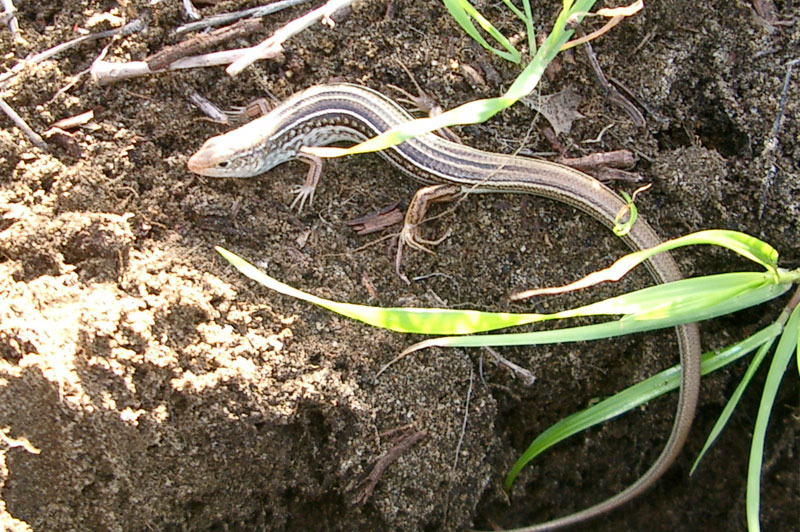
Image: West coast ctenotus (Ctenotus fallens) - fast moving and diurnal skink. It favours low costal vegetation on sandy soils but can be found in disturbed areas with introduced grasses. Photo courtesy to the Quinns Rocks Environmental Group Inc.
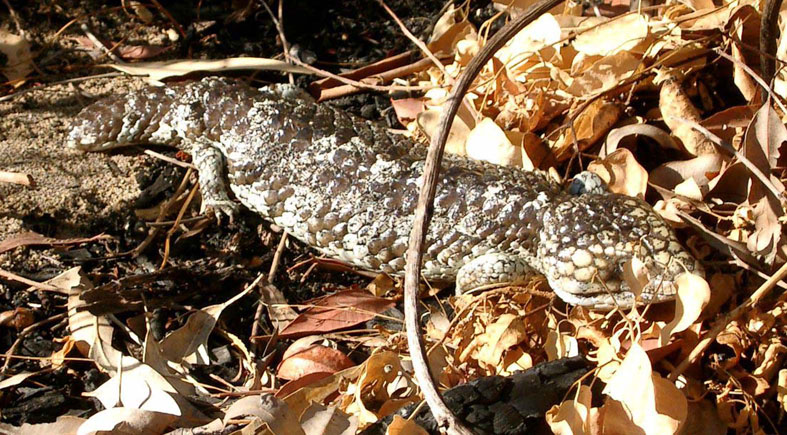
Image: Bobtail (Tiliqua rugosa) is a common large skink. Photo courtesy to the Quinns Rocks Environmental Group Inc.
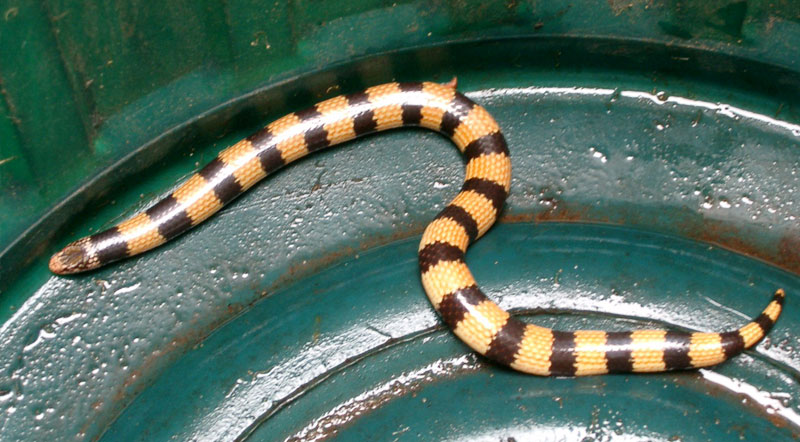
Image: Banded sand snake or Jan's banded snake (Simoselaps bertholdi) is a common burrowing snake. They do not grow larger than 40cm and while venomous, they are considered harmless. Mainly moves at night and during the day they shelter in loose topsoil, leaf litter, rocks, logs and rubbish. Photo courtesy to the Quinns Rocks Environmental Group Inc.
Various bird surveys of the coastal areas in the City of Wanneroo recorded a comprehensive list of species, including birds that are now extinct in other parts of the metropolitan coast. Significant species recorded included the White-winged Fairy Wren, White-browed Scrubwren, White-breasted Robin, New Holland Honeyeater and Carnaby’s Black Cockatoo. One bird not listed but observed along the Mindarie foreshore is the Osprey, a fish-eating raptor. For more information about this species, follow the trail.
The full list of birds observed is below:
- Nankeen Kestrel Falco cenchroides
- Silver Gull Larus novaehollandia
- Laughing Turtle-Dove Streptopelia chinensis
- Carnaby's Black Cockatoo Calyptorhynchus banksii
- Galah Eolophus (Cacatua) roseicapilla
- Australian Ringneck Barnadius zonarius
- Splendid Fairy Wren Malarus splendens
- White Winged Fairy Wren Malarus leucopterus
- White Browed Scrub Wren Sericomis frontalis
- Western Thornbill Acanthiza inomata
- Yellow Rumped Thornbill Acanthiza chrysorrhoa
- Red Wattlebird Anthochaera carunculata
- Little Wattlebird Anthochaera lunulata
- Singing Honeyeater Lichenostomus virescens
- Brown Honeyeater Lichmera indistincta
- New Holland Honeyeater Phylidonyris novaehollandae
- White Cheeked Honeyeater Phylidonyris albifrons
- Western Spinebill Acanthorhynchus superciliosus
- Scarlet Robin Petroica multicolor
- White Breasted Robin Eopsaltria pulverulenta
- Rufous Whistler Pachycephala rufiventris
- Grey Fantail Rhipidura fuliginosa
- Willie Wagtail Rhipidura leucophrys
- Black Faced Cuckoo Shrike Coracina novacholiandia
- Dusky Woodswallow Artamus cyanopterus
- Grey Butcherbird Cracticus torquatus
- Silvereye Zosterops lateralis
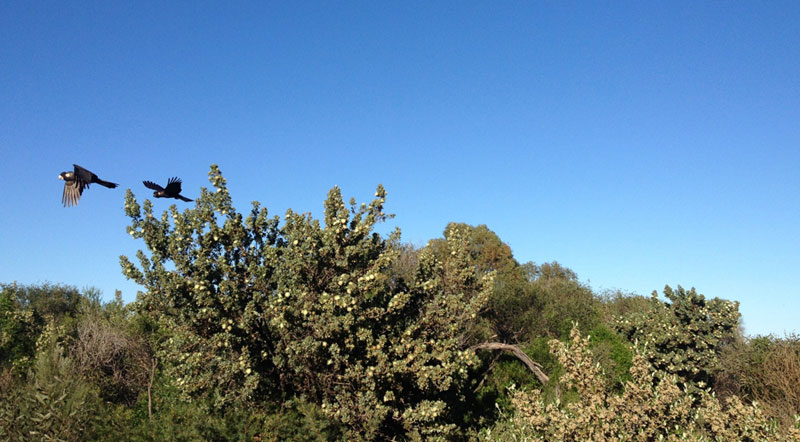
Image: Carnaby's Black Cockatoos (Calyptorhynchus latirostris) are listed as 'Endangered' under Australian legislation. In winter months they visit the foreshore bushland to feed on Parrot bush (Banksia sessilis). Photo courtesy to the Quinns Rocks Environmental Group Inc.
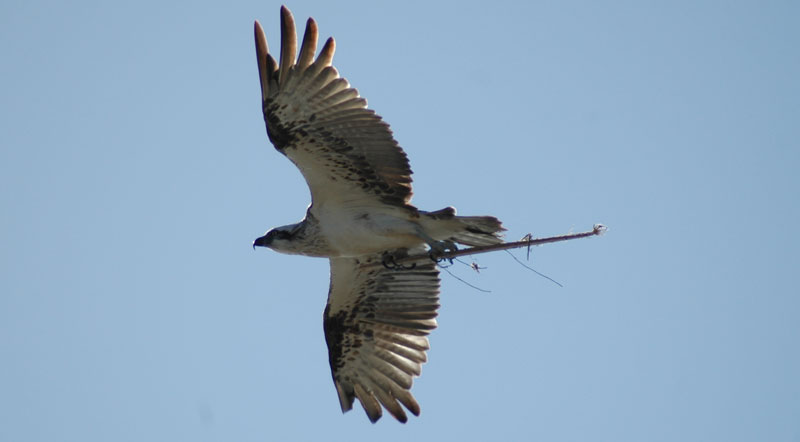
Image: You can contribute to the worldwide monitoring of Ospreys (Pandion cristatus) by recording your observations via the ‘OSPREY WATCH’ website. Photo courtesy to the Quinns Rocks Environmental Group Inc.
Due to the smaller size of the bushland remaining along between Quinns Rocks dog beach and Mindarie marina, larger mammals previously recorded in this area can no longer persist. However, following fox control, the small Quenda has been observed in this coastal area. The Quenda (Isoodon obesulus fusciventer) is a subspecies of Southern Brown Bandicoot that is only found in southwest of Western Australia.
Quendas are under threat from habitat loss, vehicle strikes, predation from cats, dogs and foxes, drowning in swimming pools and garden ponds and poisoning from snail and rat baits.
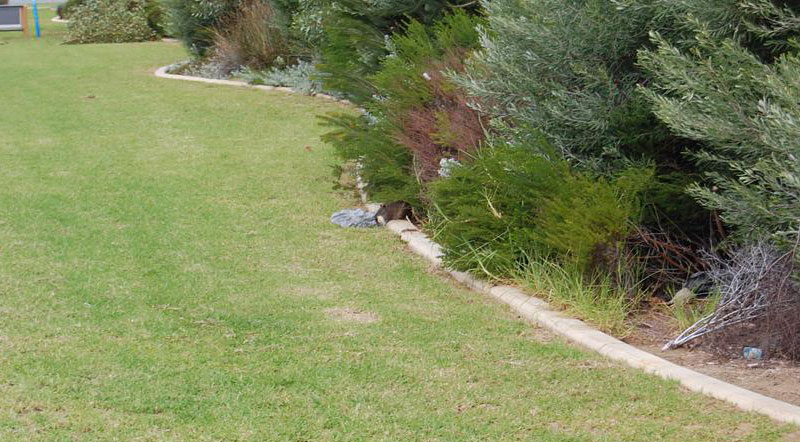
Image: To ensure Quenda continue to live in the Quinns Rocks-Mindarie foreshore bushland, it is important to keep cats indoors, dogs on leashes, swimming pools covered and if your backyard adjoins bushland consider how you use snail and rat baits. Photo courtesy to the Quinns Rocks Environmental Group Inc.
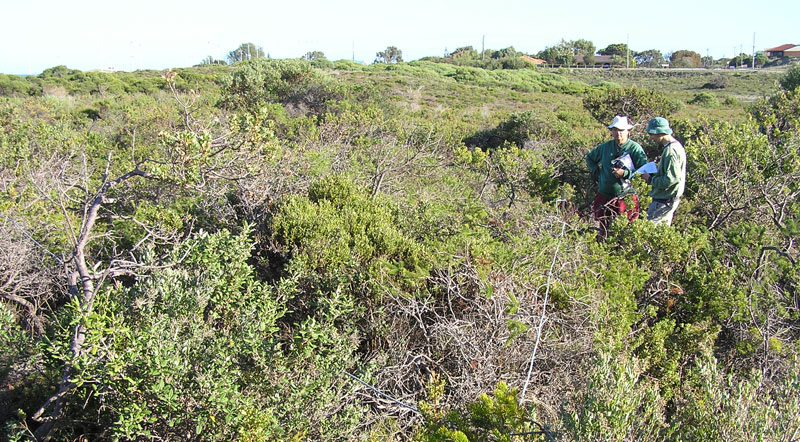
Image: Mapping of woody weed densities - focusing on Japanese peppertrees (Schinus terebinthifolia). Photo courtesy to the Quinns Rocks Environmental Group Inc.
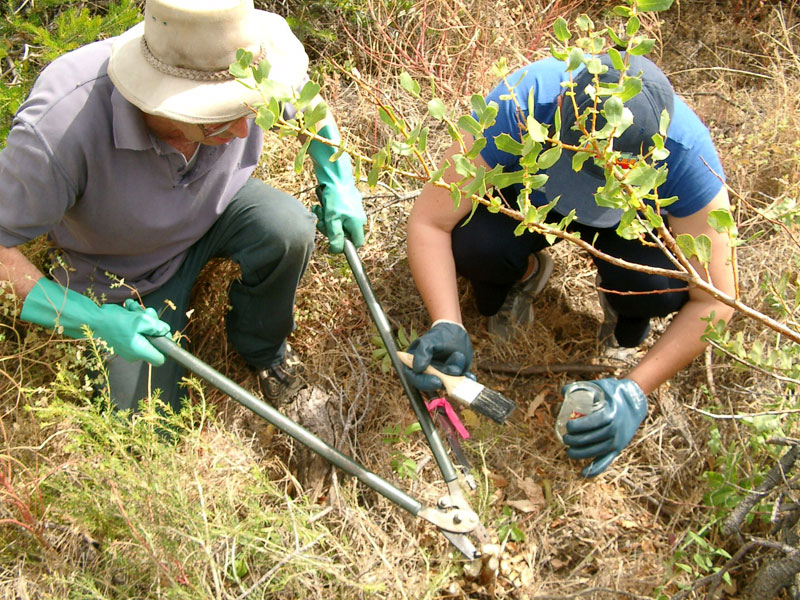
Image: Removal of Japanese Peppertrees (Schinus terebinthifolia), an ornamental tree that can form thickets and smother native plants in bushland. Numerous trees were removed from bushland on the corner of Seaham Drive and Kinsale Drive, Mindarie. Photo courtesy to the Quinns Rocks Environmental Group Inc.
REFERENCES
- Bush B, Maryan B, Browne-Cooper R and Robinson D (2007) Reptiles and frogs in the bush: Southwestern Australia. UWA Press.
- Dixon, K. (2011) Coastal Plants. A guide to the identification and restoration of plants of the Perth region. Cambridge Coastcare.
- Ecoscape (2004) Foreshore Management Plan Mindarie - Quinns Rocks, City of Wanneroo